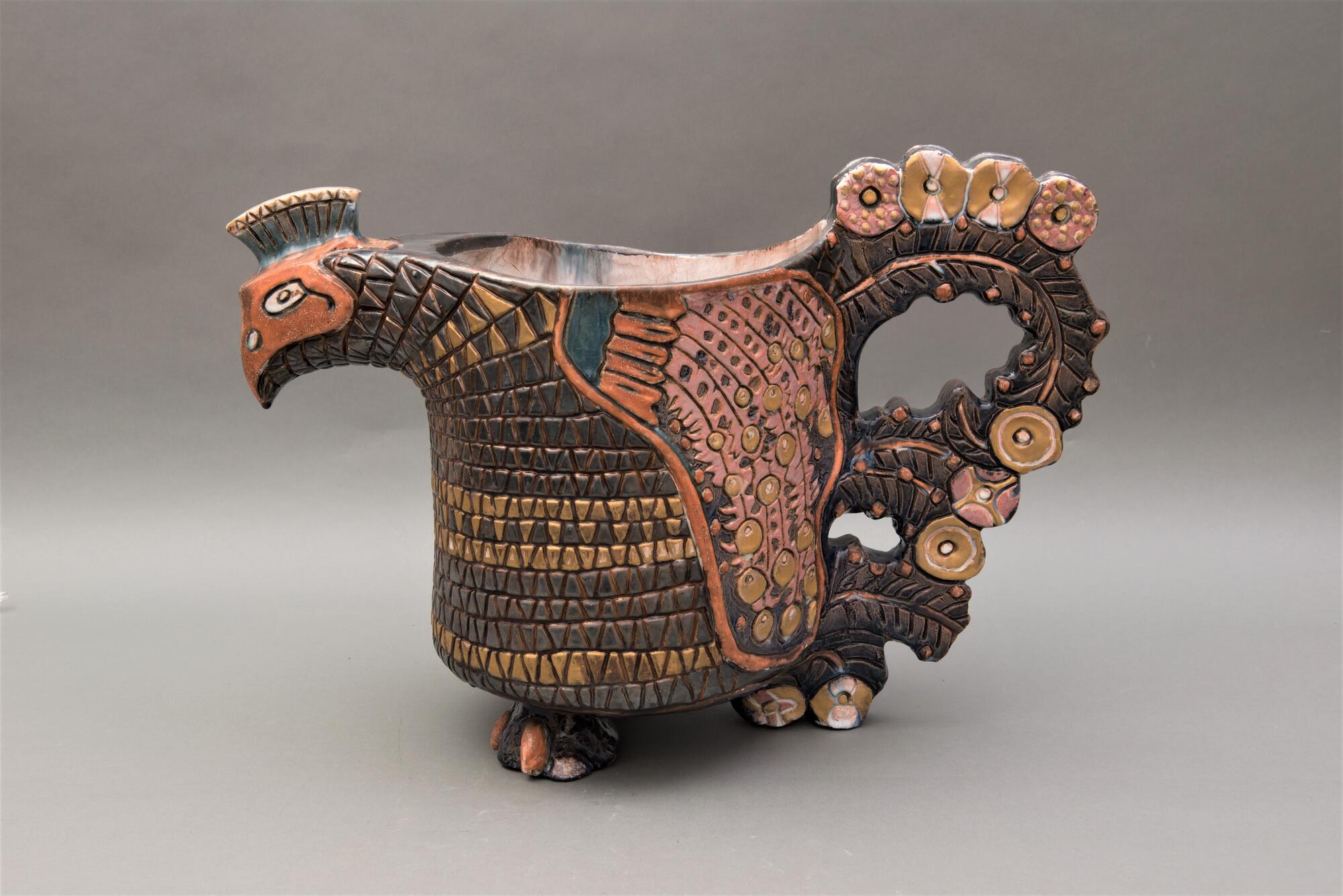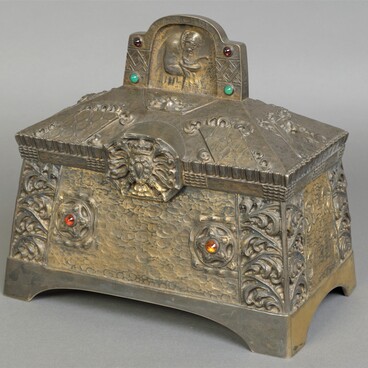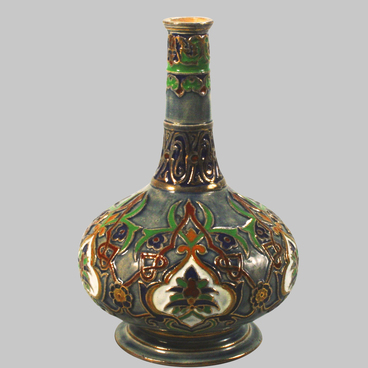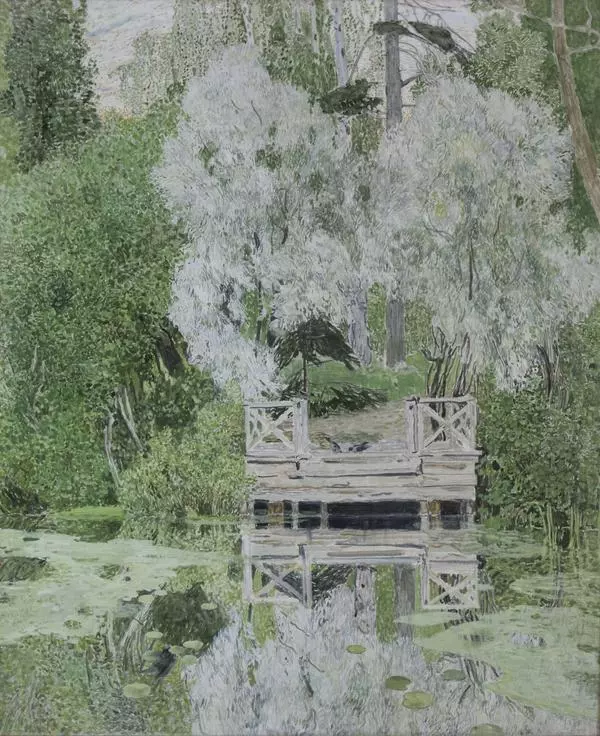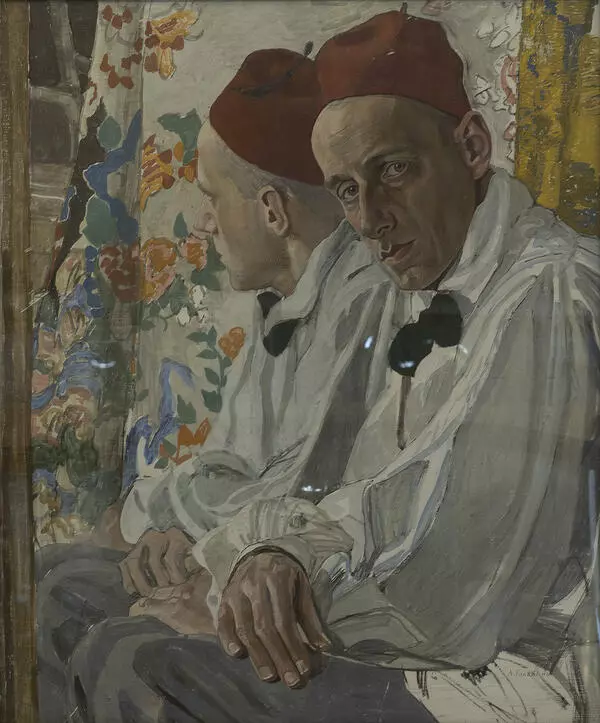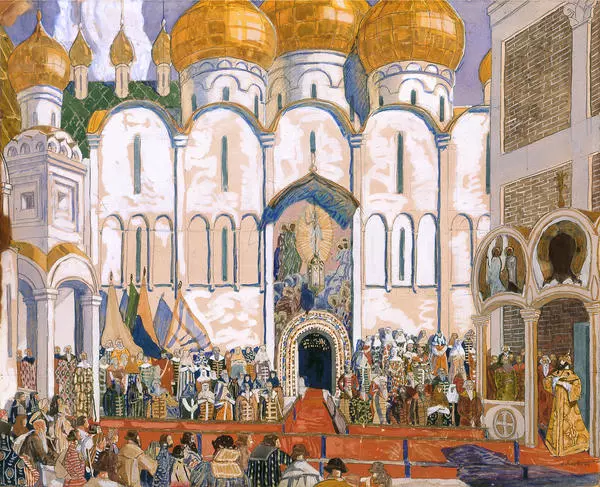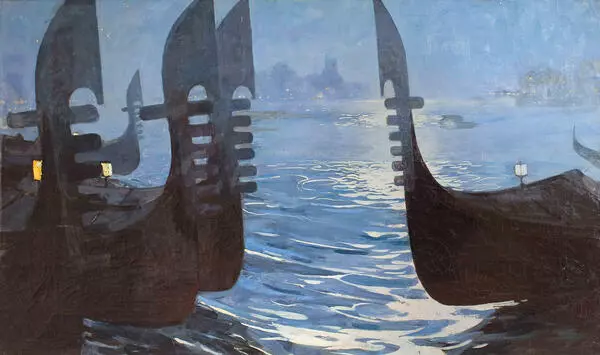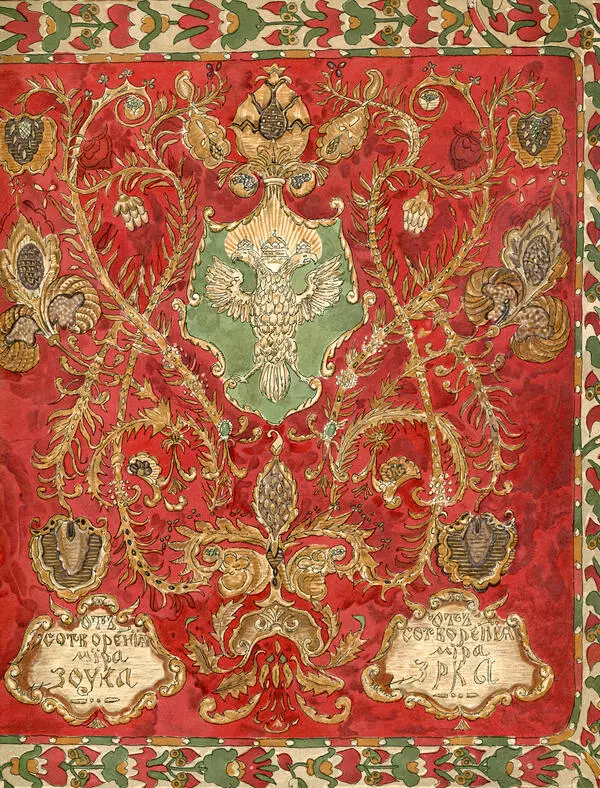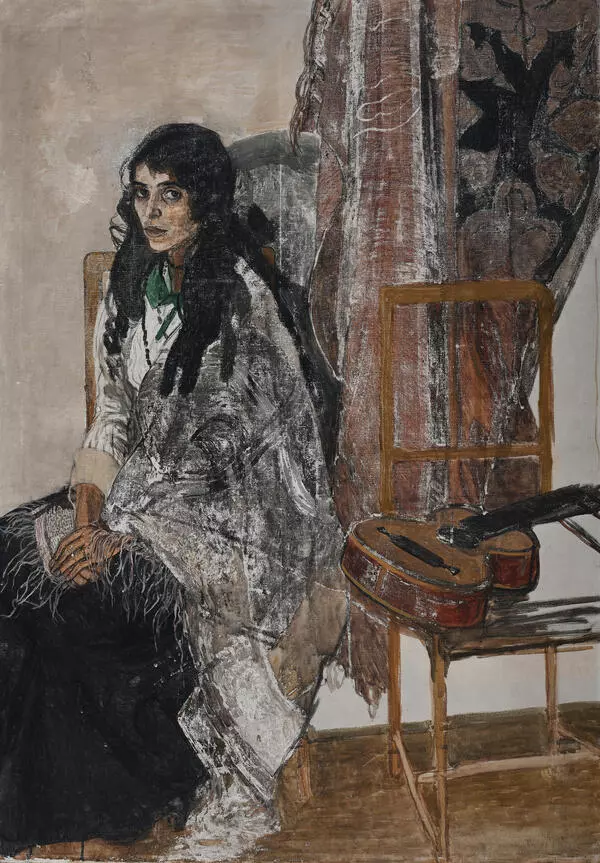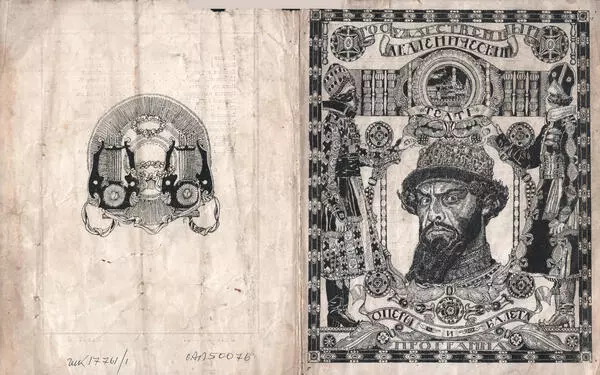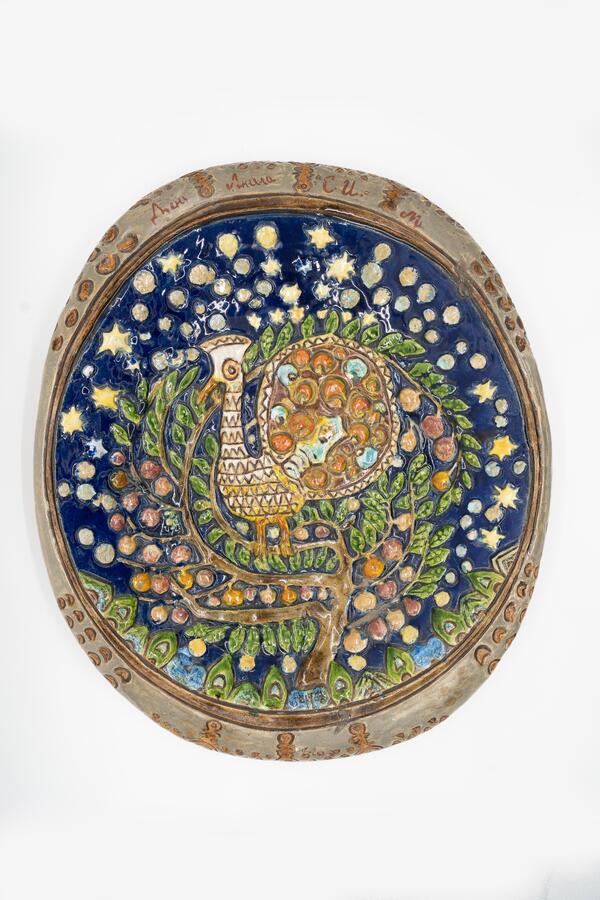At 1900 Paris Exposition, Alexander Golovin, an outstanding theater artist, master of decorative and applied arts, was awarded a silver medal for ceramic work. One of the works that took part in the exhibition is the ‘Rooster’ loving cup and decorative chicken-shaped ladles.
Loving cup (or bratina in Russian) is a spherical vessel with a cone-shaped lid in which alcoholic beverages such as beer, mead, or wine were served. Such ware was used in the 16th-19th centuries at feasts, which were called brotherly feasts — when drinks were served ‘to the whole brethren’, or at commemorations. One large loving cup held about six liters — people drank from it, scooping up the drink with a ladle.
In his work, Golovin refused not only the materials common for the manufacture of such vessels, such as wood and silver, but also their traditional spherical shape in favor of a cylindrical one: the vessel is pulled upwards. The loving cup is decorated with an ornament that combines geometric and floral motifs. Thereat, both the ornament and the color scheme were made by Golovin in Art Nouveau style. Petr Vaulin, a chemist-technologist of the Abramtsevo ceramic workshop, helped to implement the artist’s idea. He studied the properties of ceramics, conducted experiments and was able to solve the riddle of restorative firing technology, forgotten by that time. The special glaze used in this technology gave the items an iridescent metallic sheen. Vaulin received an honorable mention for his skill at the 1900 Paris Exposition.
Alexander Golovin got involved in the activities of the Abramtsevo ceramic workshop in 1898 during the preparations for the Paris exhibition. At the same time, the artist Mikhail Vrubel was creating his famous fireplace in the Abramtsevo workshop. Golovin left rapturous reviews on Vrubel’s work, and perhaps it was under the impression of this work that he also decided to try his hand at ceramics. The exhibition in Paris became an important event in the creative life of Alexander Golovin also because he designed the interiors of the exhibition’s handicraft department. Painted wooden carvings that adorned the facades and interiors of the building were created by artisans at the toy workshop of the Moscow provincial county in Sergiev Posad and in the Abramtsevo carpentry workshop according to the designs of the pavilion authors. Above the “Rooster” loving cup there is a carved relief, which was the back of the hinged shelf. This is the only surviving fragment of the interior of the pavilion, known to us from black and white photographs.
Loving cup (or bratina in Russian) is a spherical vessel with a cone-shaped lid in which alcoholic beverages such as beer, mead, or wine were served. Such ware was used in the 16th-19th centuries at feasts, which were called brotherly feasts — when drinks were served ‘to the whole brethren’, or at commemorations. One large loving cup held about six liters — people drank from it, scooping up the drink with a ladle.
In his work, Golovin refused not only the materials common for the manufacture of such vessels, such as wood and silver, but also their traditional spherical shape in favor of a cylindrical one: the vessel is pulled upwards. The loving cup is decorated with an ornament that combines geometric and floral motifs. Thereat, both the ornament and the color scheme were made by Golovin in Art Nouveau style. Petr Vaulin, a chemist-technologist of the Abramtsevo ceramic workshop, helped to implement the artist’s idea. He studied the properties of ceramics, conducted experiments and was able to solve the riddle of restorative firing technology, forgotten by that time. The special glaze used in this technology gave the items an iridescent metallic sheen. Vaulin received an honorable mention for his skill at the 1900 Paris Exposition.
Alexander Golovin got involved in the activities of the Abramtsevo ceramic workshop in 1898 during the preparations for the Paris exhibition. At the same time, the artist Mikhail Vrubel was creating his famous fireplace in the Abramtsevo workshop. Golovin left rapturous reviews on Vrubel’s work, and perhaps it was under the impression of this work that he also decided to try his hand at ceramics. The exhibition in Paris became an important event in the creative life of Alexander Golovin also because he designed the interiors of the exhibition’s handicraft department. Painted wooden carvings that adorned the facades and interiors of the building were created by artisans at the toy workshop of the Moscow provincial county in Sergiev Posad and in the Abramtsevo carpentry workshop according to the designs of the pavilion authors. Above the “Rooster” loving cup there is a carved relief, which was the back of the hinged shelf. This is the only surviving fragment of the interior of the pavilion, known to us from black and white photographs.
